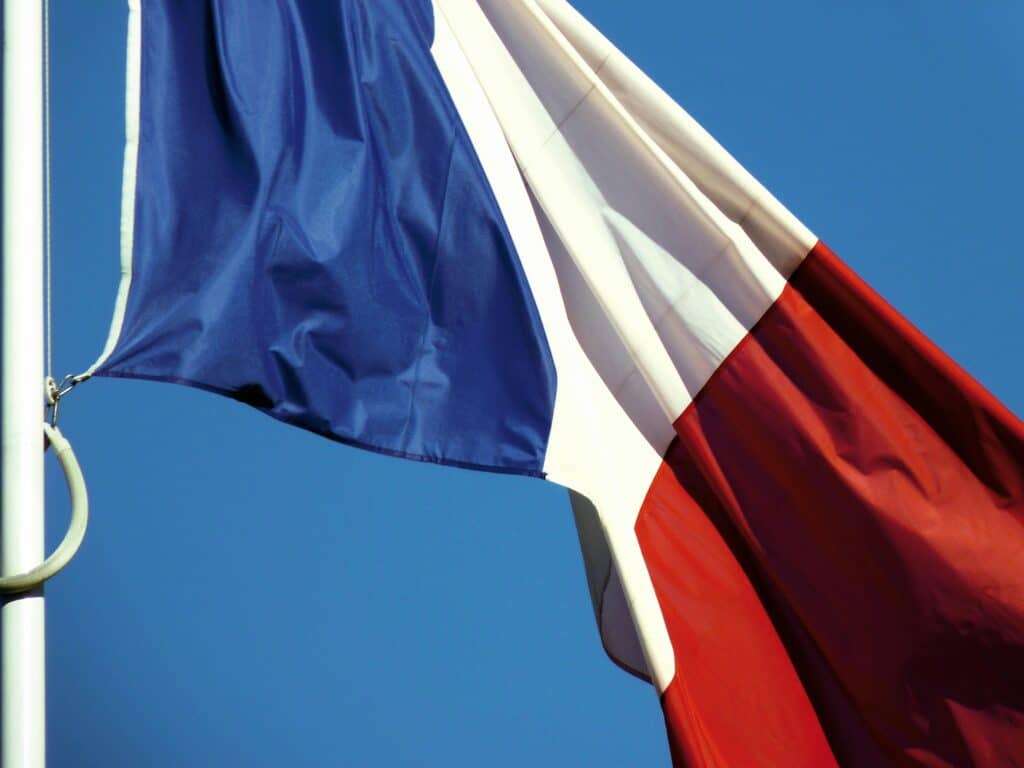
Key Highlights
- The French flag, called the “Tricolore,” stands for liberty, equality, and fraternity.
- It was adopted in 1794 during the French Revolution.
- The flag has three vertical bands in blue, white, and red.
- These colors show the values of the French Revolution and France’s history.
- The flag is a strong symbol of national unity and identity for the French people.
The flag of France is one of the most recognizable national flags. The French flag has a simple design with three colors. It stands for the country’s history, values, and culture. This flag tells an interesting story of revolution and the strong spirit of the French people.
The Evolution of the French Flag
The French flag, as we know it today, did not just appear. Its story is connected to many years of French history. This includes the royal flags from long ago and the difficult times during the French Revolution. The changes in the flag show how France’s politics and national identity changed over time.
Throughout the years, the French flag went through different changes. Various symbols and colors were popular at different times. From the oriflamme in the early Middle Ages to the white flag of the Bourbon monarchy, each version tells a part of France’s interesting history.
Origins and Early Designs
The story of the French flag goes back to the Middle Ages. One of the first flags was the oriflamme. It was a holy banner linked to Saint Denis, who is the patron saint of France. This red flag had gold flames and showed that French kings were under divine protection.
As the kings grew in power, another flag appeared. The royal banner had gold fleurs-de-lis on a blue background. This symbol stood for the kings’ rule and history. The traditional colours of Paris, blue and red, also came into play in early designs.
By the 1700s, the white flag of the Bourbons was the main flag of the French kings. This simple flag showed royal power. It stood out when compared to the tricolored flag that would soon emerge.
Transition to the Tricolour
The French Revolution of 1789 was an important time in France. It gave rise to the tricolour flag. During the revolution, the people of Paris chose a cockade with the traditional colours of Paris—blue and red—to show their fight. The Marquis de Lafayette, an important person in the revolution, added white, known as the “ancient French colour,” to the cockade. This created the first version of the tricolour.
This new flag symbolized the ideas of liberty, equality, and fraternity. Soon, the revolutionaries accepted it. In 1790, the tricolour flag was officially adopted. It was arranged with red closest to the flagpole. This flag became an important symbol of the new French Republic.
The influence of the tricolour flag reached beyond France. It inspired many sovereign states to design their own tricolour flags. They wanted to reflect the ideas of liberty, equality, and fraternity. The French tricolour, born from the revolution, came to stand for more than just a country. It represented a hope for a fairer world.

Frequently Asked Questions
What do the colors of the French flag represent?
The colors of the French flag represent important values. Blue stands for liberty and loyalty. White symbolizes equality and unity. Red represents fraternity and bravery.
How has the French flag changed over time?
The flags of France have changed many times over the years. These changes show different political groups and national identities. One key moment was when the tricolour was replaced by the white flag of the Bourbons in the 19th century. This moment highlights the mixed history of the famous French national symbol.
Are there any significant differences between the French and other tricolour flags?
Many countries use a tricolour design for their state flags. This design is often inspired by the French flag. However, there are differences in the shades of colors and how the vertical bands are arranged. For instance, some custom flags change the order of the colors or add special symbols. This shows the unique identities of different nations. It highlights the variety seen in flags of the world.